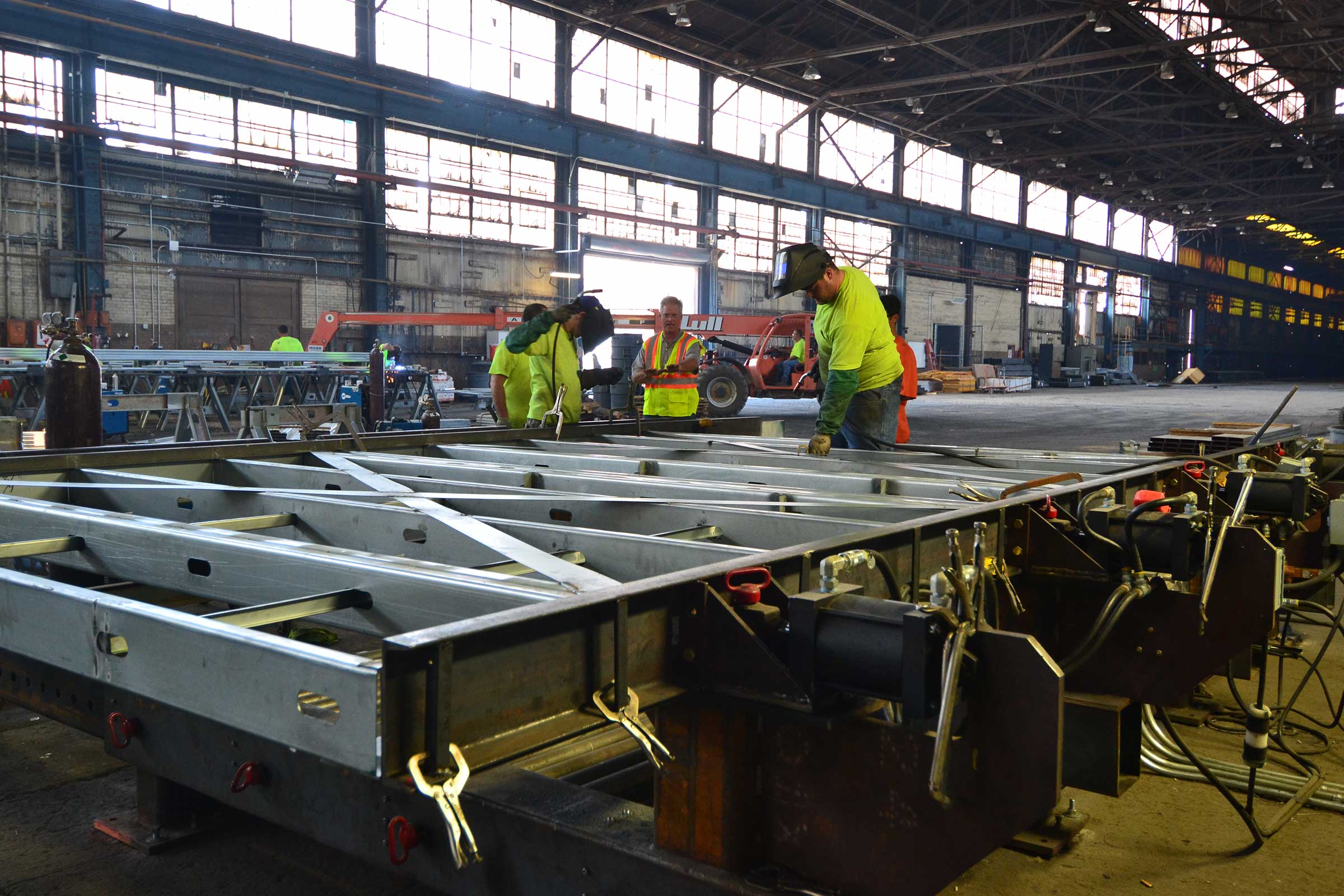
What difference does a decade make? Well, think about this — ten years ago, Uber, Instagram, and 4G networks didn’t exist. In fact, it was this time 10 years ago that Apple first unveiled the iPad. The inventions of the past decade have impacted and shaped our daily lives so much in a relatively short time. I mean, when’s the last time you hailed a taxi? So, why build buildings the same exact way we did in 2010?
To be fair, there are certain aspects of good, solid construction that don’t need to change. But there is also a lot of room for improvement. We can use technology to eliminate waste, build faster, safer, and with improved quality. One method of construction can deliver all those benefits, but it’s not the right choice for every project.
What is Modular Construction?
Modular construction is a building method where portions of a structure are built off site, in a controlled setting. The innovation came out of healthcare construction where hospital rooms, and specifically bathrooms, are completed by multiple trades repeating the same process over and over. The issue is when building bathrooms, nearly a dozen trade partners are all trying to complete their work in very tight spaces, practically on top of each other. Modular construction levels out the workload. Entire bathrooms can be built off site, in a much more comfortable and efficient working environment while the hospital structure is still going up. The practice can save weeks on a project and, according to some reports, can increase the speed of construction by as much as 50%. That sounds pretty great, so you might be thinking, “why not do this on every project?” Here’s what you need to know about how and if modular construction can benefit your project.
Weighing the Cost
Implementing modular design and construction into a project might be more expensive, but for a lot of clients the potential benefit outweighs the cost. If you’re building an apartment building and can complete the project months earlier, you’re collecting rent months earlier as well. The same is true for hotels. And a hospital that can start treating patients earlier than expected allows our healthcare clients to better serve their patients, faster. If speed to market and seeing a return on your investment faster is your top priority, it could be worth it to consider modular construction on your next project.
Consistency is Key
On a modular design project, trade partners set up in a climate-controlled warehouse or large workspace and essentially work in an assembly line. The process is efficient and eliminates time spent for trade partners to move tools, materials, and equipment around a building to complete different rooms. Because of this controlled environment, quality can be even more carefully controlled and managed. A hotel that has a consistent brand and identical rooms is the perfect candidate for modular construction. Entire hallways of rooms can be constructed off site while the field team is doing site work, then delivered on trucks and put into place, almost like LEGO® bricks. A specialized modular construction trade partner works to connect the pieces and produce a finished, structurally sound hotel.
First Step to Success
So, if you think modular construction could be right for your project, what is the first step? I’d suggest hiring a contractor at the same time as your architect so they can work together to create the modular design. Why? Say an architect includes modular design elements and the plan is to have bathrooms prefabricated off site and delivered to the project to be installed. There are a lot of factors that have to be considered, planned, and included into the drawings for successful on-time installation. An experienced contractor can help the design team include all the required constructability features in the drawings as well as determine what location in each room the bathrooms should be so they can be installed as a single, large piece. In addition, your contractor can build the construction schedule along with the design to determine when the bathroom pods need to be completed and delivered so they can be moved into place inside the building. That might be before the exterior skin goes up so they can be lifted into place without damaging any completed work.
As technology advances, so does our ability to build faster, safer, and with increased quality. Modular construction is a potentially beneficial method for our clients whose first priority is a fast schedule or speed to market. If you don’t think it’s right for your project, there are still other lean methods an experienced contractor can suggest to create value. After all, modular construction is essentially a more complex and comprehensive form of prefabrication. So, instead of prefabricating an entire room, your team could prefabricate some of the complicated building elements off site to deliver the same benefits of speed and quality. For example, we’ve had success building all the overhead electrical, vents, mechanical and plumbing work into “racks” to be delivered and installed as one piece. To ensure your project is being built with the latest lean methods that are right for your project, choose an experienced contractor and engage them as early as possible.

